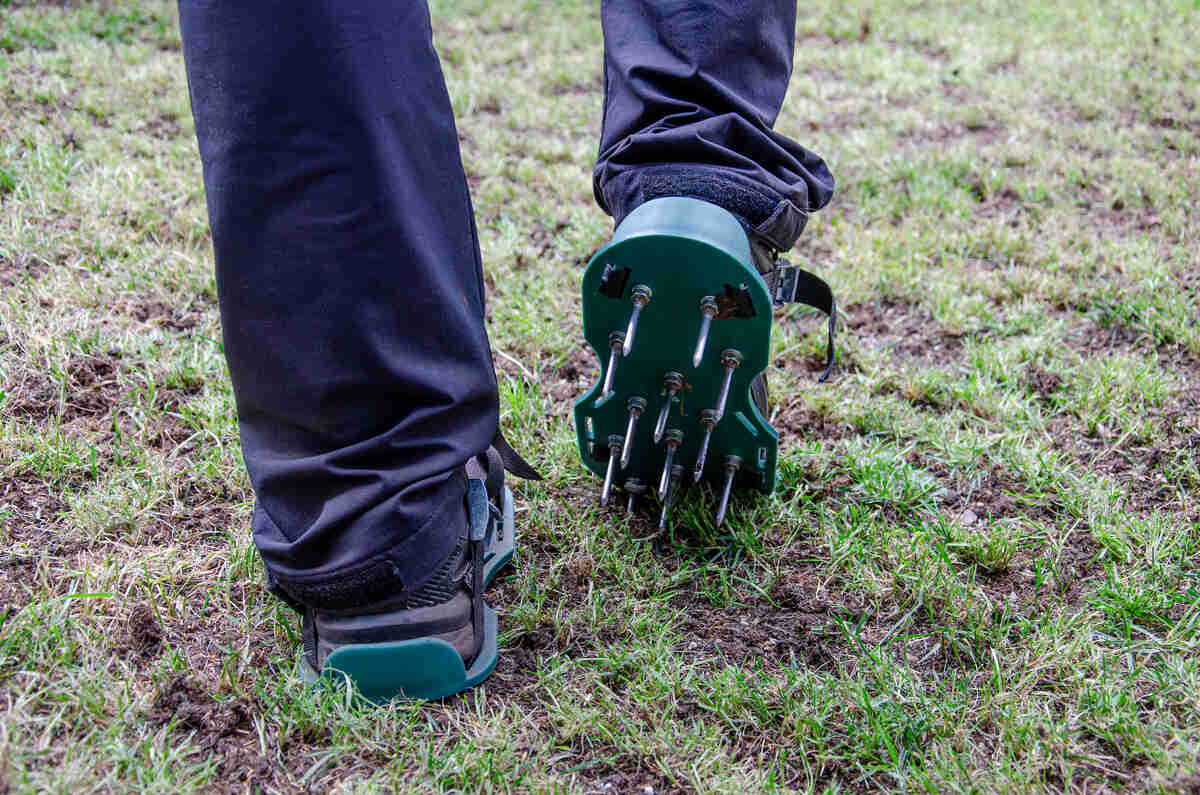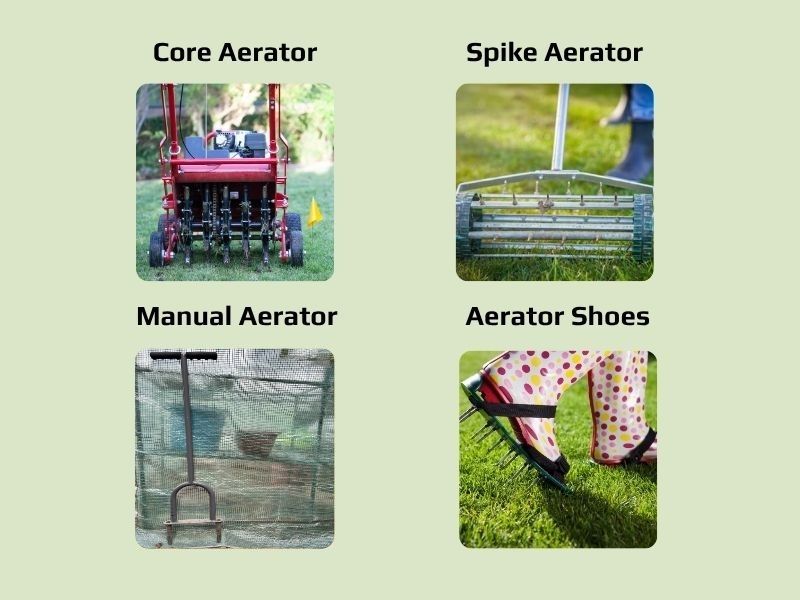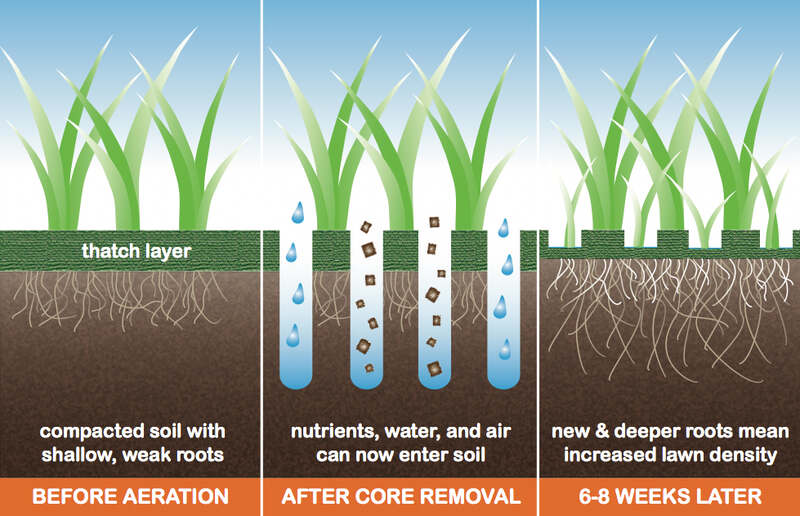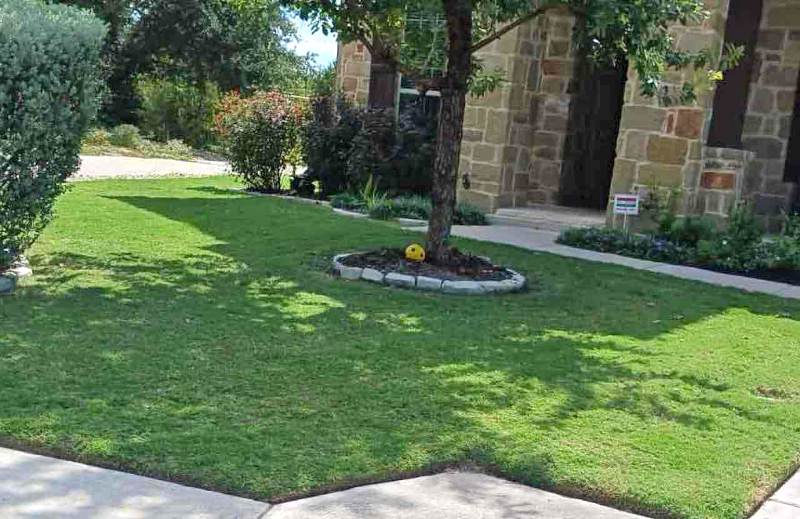
Learning how to aerate your lawn is easy. But you must choose the right tools and prepare your lawn before aeration. Once you’re done aerating your lawn, you’ll need to clean up and do follow-up care.
You’ll discover that a few hours of work can help alleviate soil compaction and boost your lawn’s health. We’ve also asked an expert to help explain how you can get the most out of aeration.
| Project Difficulty: Easy to intermediate Estimated Time to Complete: Manual aeration can take 2 to 4 hours, while core aeration can take around 2 hours. Project Cost: Renting aeration equipment costs around $100 per day. If you’re hiring a pro, lawn aeration costs around $107 to $202. |
Determine the Right Timing
Before choosing the right tools, you must first determine the right timing for aerating your lawn, which will depend on the type of grass you have.
For warm-season grasses, the best time to aerate your lawn is late spring to early summer.
For cool-season grasses, the best time for lawn aeration is late summer to early fall.
Choose the Right Tools

Spike Aerator: Kamil Macniak / Shutterstock
Manual Aerator: Photo by Sarah Bahr
Aerator Shoes: NinaMalyna / Adobe Stock
According to John Orick, Master Gardener state coordinator at Purdue University Extension, core aeration is the best option for fixing soil compaction on lawns. He adds, “The hollow tines on the machine actually remove soil cores from the lawn, opening up the soil for air, water, and nutrient movement to the root system.”
Although core aeration is the most effective option, there are other alternatives, and your choice will depend on your soil type and the size of the area you want to aerate. Basically, if you have a small yard or area to aerate, it may not be worth it (or even possible) to use a core aerator.
Here are the most common lawn aerators and where to use them:
| Lawn Aerator | Where to Use |
| Core aerator | Heavily-compacted soil, clay-heavy lawns |
| Spike aerator | Mildly compacted lawns |
| Liquid aerator | Minor soil compaction |
| Manual aerator | Small lawns, spot treatments |
| Aerator shoes | Small lawns |
See Related:
- What Causes Compacted Soil?
- How to Test for Compacted Soil
- Core Aeration vs. Spike Aeration: What’s the Difference?
- Liquid Aeration vs. Core Aeration: What’s the Difference?
| Skip the guesswork and let a LawnStarter aeration pro take care of your lawn. You can even bundle aeration with overseeding for around $362 on a small lawn. Last year, our pros performed 245 aeration and overseeding services, which our customers gave an average rating of 4.1. |
Prepare Your Lawn
To avoid problems and ensure better results, get your lawn ready before aeration:
- Mow your lawn short: Cut your grass a bit shorter than the recommended mowing height.
- Clear the yard: Pick up any toys, sticks, rocks, or yard debris that could get in the way or jam up your equipment.
- Mark any underground hazards: Use marking flags or paint to identify sprinkler heads, shallow irrigation lines, or invisible fences. Also, remember to call 811 — they’ll mark the underground utility lines on your lawn for you free of charge.
- Water your lawn (if dry): If the soil feels hard or dry, water it a day or two before you aerate. The soil must be pliable enough for aeration, so water your lawn (around 10 minutes depending on soil type and weather conditions) until the soil is moist but not muddy.
Aerate Your Lawn

Different lawn aerator machines call for different techniques:
Core Aeration
Follow these steps for core aeration:
- Push or drive your core/plug aerator slowly forward, allowing the hollow tines to dig into the soil and pull out plugs.
- Overlap each pass slightly, covering the entire lawn in one direction, to ensure uniform coverage. For best results, repeat in a perpendicular direction.
- Don’t rush. Let the machine do the work to get deep, even plugs.
Watch this video to see how core aeration works:
Spike Aeration
If you’re using a spike aerator, do the following:
- Roll or press the spikes into the soil as you walk across the lawn, applying steady pressure.
- Cover the lawn in straight, even rows.
- If needed, go over it again at a 45-degree angle.
| Pro Tip: Avoid using spike aerators on heavy clay soils, as they can compact the soil further. |
Liquid Aeration
For liquid aeration, the steps are:
- Attach the liquid aerator to your garden hose using the included sprayer.
- Spray the solution evenly across the lawn, working in a consistent sweeping motion.
- Apply during mild weather and let it soak in, allowing it to work its magic.
| Note: Avoid applying a liquid aerator if you’re expecting rain in the next 24 hours. Otherwise, it’ll just get washed away. |
See Related: Does Liquid Lawn Aeration Work?
Manual Aeration

Follow these steps when using a garden fork or hollow tine aerator:
- Position the manual aerator straight, then step or press down firmly to drive it into the soil.
- Repeat every few inches in a grid-like pattern, focusing more on compacted or high-traffic areas.
| My Tip: Use this method only for small areas or tight corners, as it can be extremely exhausting to use on a large yard. |
Aerator Shoes
Aerate your lawn while simply walking:
- Strap the aerator shoes over your work shoes.
- Walk across your lawn, covering the entire area.
- With each step, ensure the spikes on the soles of your aerator shoes penetrate the soil.
Clean Up After Aeration

Once you’re done aerating your lawn, these can help your lawn recover more quickly:
- Leave the plugs on your lawn: Soil plugs or cores will break down naturally over the next couple of weeks. Orick says, “Soil cores left on top of the lawn contain soil organisms that help break down the thatch layer.”
- Rake only if necessary: If the plugs clump up in certain spots, you can lightly rake them out and spread them more evenly.
- Pause watering for a day or two: Give the soil a chance to breathe and settle before resuming your regular watering.
Perform Follow-Up Care
Your lawn just went ‘under the knife.’ To help it recover and maximize results, here are some of the things you should do after aeration:
- Add topdressing: Filling your newly aerated lawn with a nutrient-rich material like compost can further improve soil health.
- Apply fertilizer: Nutrients can reach the roots easily if you apply fertilizer right after aerating.
- Overseed bare or thin patches: Since the holes give seeds great contact with the soil, it’s only logical to introduce new seeds to bare or thin patches.
- Water your lawn properly: After overseeding, water your lawn lightly and regularly over the next few weeks to help seeds germinate and boost root development.
- Limit foot traffic: Even the best grasses for high-traffic yards need time to heal after aeration, so avoid walking on your lawn for at least 1 to 2 weeks.
See Related: Topdressing a Lawn: The Benefits and How to Do It
| Why stress over fertilizer timing and application when LawnStarter fertilizer pros can do it right the first time? With an average 4.4 customer satisfaction rating, our pros completed around 40,000 lawn fertilization jobs last year, which cost an average of $103 per service. |
FAQ About Lawn Aeration
Apart from alleviating soil compaction, reasons to aerate your lawn include improving water absorption, enhancing nutrient uptake, developing stronger roots, as well as controlling thatch and weeds.
The soil might be too dry or hard if your core aerator isn’t pulling plugs. Check for dull or clogged tines that may need cleaning or replacement. Also, don’t forget to water your lawn the day before aeration.
The difference between core aeration and spike aeration is that core aeration pulls out plugs of soil while spike aeration pokes holes into the soil without removing anything.
Aerating Your Lawn Doesn’t Have to Be Tedious

With the right tools, a little prep work, and follow-up care, aerating your lawn is totally doable. But not everyone is up for the DIY route. If you think lawn aeration is exhausting, you can always reach out to a LawnStarter aeration pro who can help with lawn aeration, as well as leaf removal, overseeding, mowing, dethatching, and fertilization.
Sources:
- “Aerating Lawns.” By Robert Polomski, associate Extension specialist, and Debbie Shaughnessy, former HGIC information specialist. Clemson University Home and Garden Information Center.
- “Improving Soil Conditions for Turf with Fall Aeration.” Michigan State University Extension.
- John Orick, Master Gardener state coordinator at Purdue University Extension. Personal interview.
- “Lawn Management through the Seasons.” By Peter Landschoot, former professor. Pennsylvania State University.
- “What is the Proper Way to Aerate a Lawn?” Iowa State University Extension and Outreach.
Main Image: Aerator shoes. Photo Credit: Nadja Abele / Adobe Stock